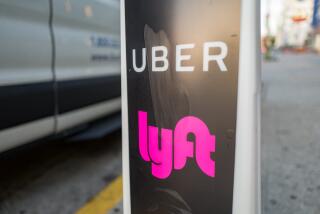Terms of the Trade
- Share via
Common terms when discussing convertible bonds:
* Conversion Ratio. The number of shares of common stock you can trade each convertible bond for.
* Conversion Premium. How much more you pay for a bond, relative to what it’s worth if converted into stock.
For instance, Systems & Computer Technology (SCTC) has a 5% convertible, due October 2004. The bond trades for $1,107.50.
At the same time, it is convertible into 37.915 shares of the company’s common stock. Since the price of the common stock was recently $24.63 a share, this bond is really worth $933.85 in stock.
The difference between the bond’s price and the stock’s value--in this case it’s 19%--is the conversion premium.
* Current Yield. The yield a bond delivers, relative to its current price.
For instance, though SCTC’s coupon is 5%, its current yield is 4.5%, reflecting the fact that the bond sells for 10% above par.
* Yield Advantage. How much more a convertible yields, relative to its underlying common stock.
Going back to the SCTC example, the bond’s current yield is 4.5%. Since this company’s common stock does not pay a dividend, its convertible has a 4.5 percentage point yield advantage over the common stock.
* Payback period. The payback period tells you how many years it will take for the yield advantage of the bond to make up for its conversion premium.
In SCTC’s case, we would divide the conversion premium (19%) by the yield advantage (4.5) to find out that this bond’s payback period is roughly 4.2 years.
(Generally, a payback period of three years or less is considered very attractive.)
* Call protection. The period of time until convertibles can be called by the company. Investors tend to seek out convertibles with enough call protection to cover the payback period.
More to Read
Inside the business of entertainment
The Wide Shot brings you news, analysis and insights on everything from streaming wars to production — and what it all means for the future.
You may occasionally receive promotional content from the Los Angeles Times.










